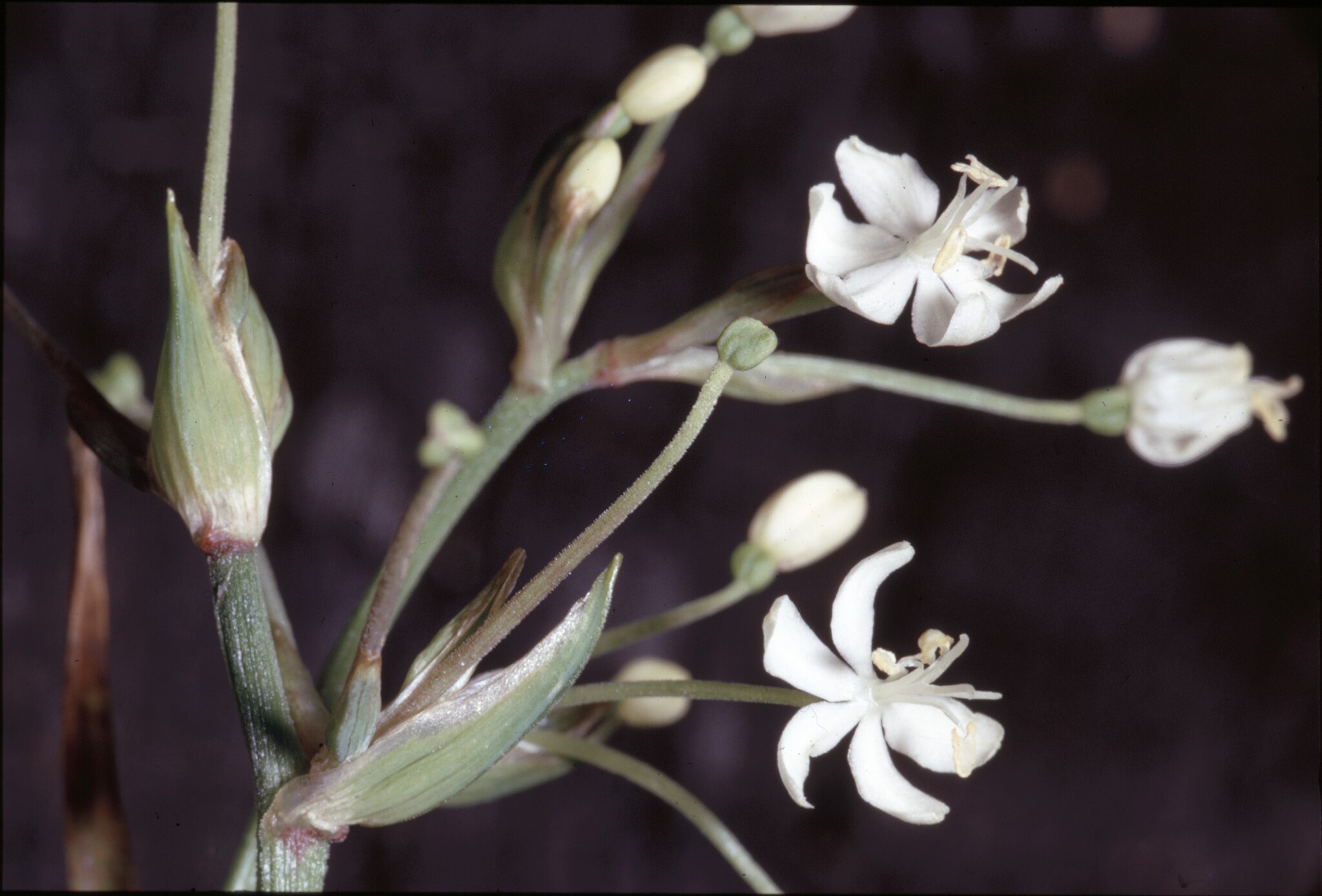
Commemorating Anne-Marie Libert (1782–1865), a Belgian botanist.
Perennial tufted herbs with short rhizomes. Leaves linear, basal, flat. Stem erect with few reduced leaves. Flowers erect, radially symmetrical, in panicle. Perianth segments free, spreading; equal or the inner ones longer. Stamens 3, fused at base, filaments flattened. Style branches entire, linear, spreading. Seeds numerous.
L. sessiliflora (Poepp.) Skottsb. from Chile has leaves linear, rigid, green, to 40 cm long. Stem to 75 cm with 2-4 reduced leaves. Panicle condensed, 10-15 cm long. Flowers very pale blue, about 15 mm wide, crowded, sessile. Outer perianth segments 3-4 mm long, green-brown; inner segments oblong, 5-7 mm long; spring. Syn. L. caerulescens Kunth The sessile blue flowers make this an easily identified species.
15 species in Australia, New Zealand, New Guinea and S America.
Division of clumps in winter, or seed.
Grass-like evergreen tussocks with panicles of small white (rarely pale blue) flowers.
Moore (1967), Blanchon et al. (2002).
Source: (2005). Iridaceae. In: . Horticultural Flora of South-eastern Australia. Volume 5. Flowering plants. Monocotyledons. The identification of garden and cultivated plants. University of New South Wales Press.
